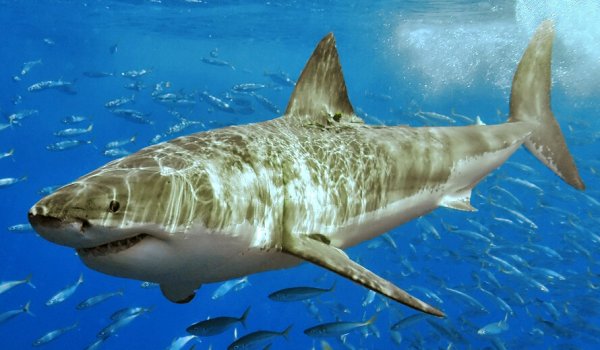This Is Why You Will NEVER See A Great White Shark In An Aquarium
Tags: opinion

By Amanda Froelich Truth Theory
Great white sharks are without a doubt one of the fiercest creatures in the ocean. It is exactly because of this that so many desire to view them when visiting an aquarium. However, there are no great white sharks presently in captivity, and that’s because aquariums are rarely able to keep the predators alive for more than 16 days. Though the exact reason is still unknown, there are a few theories as to why.
The last attempt to put a great white shark in captivity didn’t end well. Just three days into the shark’s stay at the Okinawa Churaumi Aquarium, it died. Sadly, this story mirrors dozens of other attempts.
As IFLScience reports, the first known attempt to put a great white shark in captivity was by Marineland of the Pacific, a California oceanarium and tourist attraction, in the 1950’s. That shark survived less than a day. Of course, SeaWorld tried to care for the beasts, as well. All resulted in the sharks dying or being released back to the wild within a couple of weeks. The Monterey Bay Aquarium is the only establishment to have kept a great white shark alive more than 16 days. The sharks it cared for survived several months — which is nothing compared to the lifespan of a great white in the wild.
The ferocious creatures just don’t belong in captivity. One of the theories as to why has to do with their diet. In the wild, the sharks have to be near-starving to eat anything but live prey. Because feeding a shark live prey would be both expensive and a PR nightmare, it hasn’t been done. It’s also worth noting that the sharks that did eat in captivity rarely ate adequate amounts.
A second theory is that man-made cages are just too small for the predator. Because of its anatomy, a great white shark has to constantly swim forward so water can pass over its gills and oxygen can be obtained. Growing to 6 meters (20 feet) in length, a ridiculously large tank would be needed to accommodate the creature’s needs. Additionally, a great white shark named Nicole was once recorded traveling over 12,400 miles (20,000 kilometers) venturing from Africa to Australia and back again. This is evidence that the marine creatures have an incredible endurance and need vast amounts of space to thrive.
A third theory is that the artificial environment of a glass tank results in a great white shark becoming overwhelmed or confused due to its sharp electroreception. This sensory perception enables a shark to detect subtle moves and changes in the marine environment. In captivity where it is exposed to the public, a great white shark might become confused due to the huge amounts of stimuli.
Thanks to documentaries such as Blackfish, the population is becoming increasingly educated on the errors of keeping wildlife, such as orcas and sharks, in captivity. In the wild, animals may freely thrive. And that, one might argue, is where they belong.
Via IFLScience
THIS ARTICLE IS OFFERED UNDER CREATIVE COMMONS LICENSE. IT’S OKAY TO REPUBLISH IT ANYWHERE AS LONG AS ATTRIBUTION BIO IS INCLUDED AND ALL LINKS REMAIN INTACT.
Leave Comment: